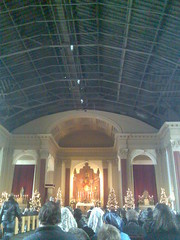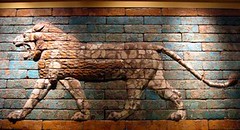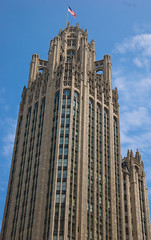
Brooklyn is the ethnic heart of New York Catholicism, a borough whose inhabitants still remember that coming to America needn't mean converting to the comforting blandness of beige Catholicism. A view across the East River shows a low cityscape still dotted with German steeples and Polish domes. With a few notable exceptions, (A San Rocco statue covered in dollar bills followed by a truck filled with small Chinese girls dressed as angels, for instance), all things weird and wonderful in the world of the popularly pious ultimately go back to the Maronites, Italians and Hispanics of the outer boroughs.
While Manhattan may have St. Pat's and Our Saviour's, you won't find the dancing Giglio with its cast of priests and brass bands, or an advertisement for a visit of the Holy Robe of the Infant of Prague to some crusty, dusty church in Queens.
We often forget the borough of Brooklyn was once a whole separate city, and the last hundred years of rule from downtown Manhattan is somewhat of a novelty in the great scheme of things. Indeed, had Bishop Loughlin had his way, Brooklyn would be the home to a behemoth cathedral that would have easily rivalled St. Pat's in sheer bulk. The illustration above is of its facade--a massive, somewhat unremarkable mid-century Victorian Gothic pile, though not without a certain hefty, muscular charm.
Robert A.M. Stern writes in his equally hefty (1,164 pages)
New York 1880:
Far and away, the most ambitious church project undertaken in Brooklyn was the Roman Catholic Cathedral of the Immaculate Conception, intended for the block bounded by Clermont, Greene, Vanderbilt, and Lafayette Avenues. A Pugin-inspired version of the Cathedral at Rouen, designed by Patrick C. Keely, it was to have been the second-largest cathedral in the country, exceeded only by New York's St. Patrick's [...], then under construction. [...] As described in 1871, the approach taken by Keely abounded in "clustered shafts, moulded bases, varied statuary, pinnacled and gabled canopies." The cathedral was to have built of blue granite. Two 98-foot-wide, 350-foot-high corner towers were to have marked the 160-foot-wide entrance facade facing Lafayette Avenue, beyond which the 354-foot-long church with its 98-foot-high, white granite nave soaring to a roof framed in oak. The project was extremely ambitious given that the archdiocese had only been in existence for eight years when the site was acquired in 1860, but Bishop John Loughlin was deeply committed to the idea of the cathedral as a beacon for Catholicism in Protestant Brooklyn, as were many laypeople, forty thousand of whom showed up for the laying of the cornerstone on June 21, 1868.
Money soon ran low, and the walls had only creeped up a paltry ten feet before construction was halted. Only one of the church's six chapels, St. John, was completed. The walls and chapel remained until 1931, when they were bulldozed to build a high school named in honor of the late bishop.
One of Loughlin's successors, incidentally, approached Westminster Cathedral designer John Francis Bentley (Keely having died) to figure out what to do with the Cathedral's foundations and stubby walls. Bentley himself visited Brooklyn and began drawings, but the British architect died before Bishop McDonnell could visit London to see the architect's work. The project was shelved, and now the only thing that remains on the site is the former Bishop's residence, now the chancery, which that pompous doorstop
The AIA Guide to New York City--at least the 1978 edition--describes as "an orphan asylum for a Charlotte Bronte novel."





















































